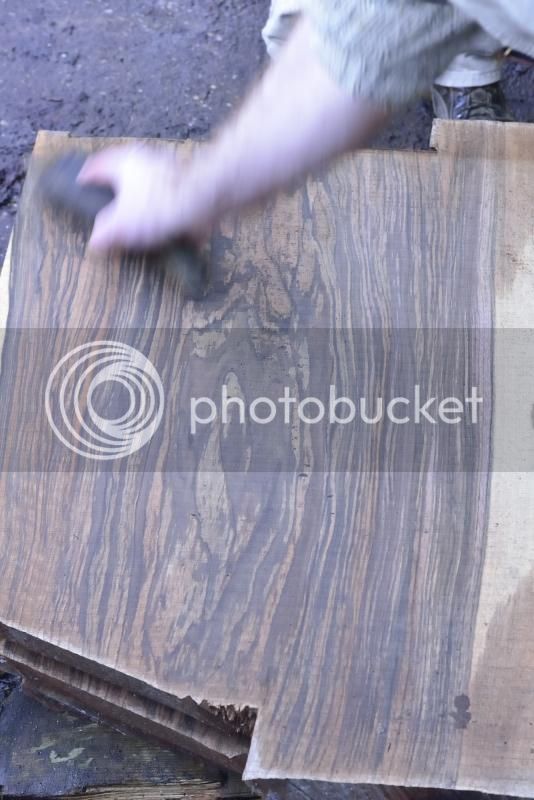Sheffield Tony
Ghost of the disenchanted
I think we could do with some more chairmaking in here !
When some of us were gathered at MAC Timbers last year, Mike demonstrated his sawmill by slicing up a big lump of walnut. I was struck by how lovely it looked. I resisted temptation then and there, but when I got home I mulled for a while on what I could do with a bit. I have a copy of Jack Hill's Country Chair Making, and took an instant liking to the Smoker's bow in there. I suspect, perhaps, that this is because it fits perfectly my mental picture of Enid Blyton's Wishing Chair, a childhood favourite ! The one in Jack Hill's book is particularly beautiful, with yew spindles and an elm seat. I decided to have a go at one with a walnut seat and arm rest, contrasting with ash for the turned parts. Went back to see Mike and bought a 2" walnut board, wide enough to make the seat from a single piece. I had half an ash log, left over from making a greenwood chair but now a bit dry, that would do for the turnery.
For the last few days, I've been turning legs. All the turned parts are made by froe, axe, drawknife and pole lathe. The finish is straight from the skew, burnished with shavings. I would not be winning any log to leg race here though - it took me 2-3 hours per leg !
The finished kit of turned parts (minus 2 to be completed) looks like so:

There's some spare at the ends of some of the pieces that will need trimming off, but I don't want to lose the centres until I'm sure that the tenons are the right size. The wood was fairly dry by now, about a year from felling, but may still shrink a little more - I've left a guestimated allowance.
More later, but don't hold your breath, got a lot on at the moment and this might take some time.
When some of us were gathered at MAC Timbers last year, Mike demonstrated his sawmill by slicing up a big lump of walnut. I was struck by how lovely it looked. I resisted temptation then and there, but when I got home I mulled for a while on what I could do with a bit. I have a copy of Jack Hill's Country Chair Making, and took an instant liking to the Smoker's bow in there. I suspect, perhaps, that this is because it fits perfectly my mental picture of Enid Blyton's Wishing Chair, a childhood favourite ! The one in Jack Hill's book is particularly beautiful, with yew spindles and an elm seat. I decided to have a go at one with a walnut seat and arm rest, contrasting with ash for the turned parts. Went back to see Mike and bought a 2" walnut board, wide enough to make the seat from a single piece. I had half an ash log, left over from making a greenwood chair but now a bit dry, that would do for the turnery.
For the last few days, I've been turning legs. All the turned parts are made by froe, axe, drawknife and pole lathe. The finish is straight from the skew, burnished with shavings. I would not be winning any log to leg race here though - it took me 2-3 hours per leg !
The finished kit of turned parts (minus 2 to be completed) looks like so:

There's some spare at the ends of some of the pieces that will need trimming off, but I don't want to lose the centres until I'm sure that the tenons are the right size. The wood was fairly dry by now, about a year from felling, but may still shrink a little more - I've left a guestimated allowance.
More later, but don't hold your breath, got a lot on at the moment and this might take some time.













































